Sea Turtle Adventure
- Katherine Dudley Hoehn
- Aug 21, 2022
- 5 min read

Decisions I made one morning made a big difference in my life and that of two newly hatched loggerhead sea turtles. Leah (my dog) and I left early for our walk on the beach and then, for some reason, we turned north instead of south. The tide was extremely low, and it was warm and still, about 8:30 am.

We saw gull action ahead and came upon a newly hatched loggerhead turtle, yet unscathed by the gulls that may have been arguing about who was going to have it for breakfast. My heart raced and I was momentarily frozen, just staring at this struggling newly hatched being. When I had my senses about me, I called my friend Ramona who is a part of Amelia Island Sea Turtle Watch (AISTW).
Ramona had Mary Duffy call me. Mary oversees all the turtle watch volunteers and I knew she would tell me exactly what to do.
I was almost directly in front of Beach Access 29, where AISTW personnel had been earlier that morning recording the emergence of hatchlings from a nest high in the dunes. My little trooper must have been at the lower end of the nest, or a slow mover. He/she looked exhausted and was still easily 12 or more feet from where the largest waves were reaching the shore. I doubted it was going to get that far. It had already come across the dry sand beach, a long way from its nest.
Mary asked me to pick it up gently and carry it into water at ankle depth or a little deeper, then release it as the next wave was going out. I picked it up with fingers on either side of its shell, between its front and back legs. It was not hard, but not entirely soft, as if it had been newly hatched. I felt its life, and its tiny flippers wiggled. It was love at first touch.
I want this little being to live and become an adult. If it is a female, she will return to Amelia Island to lay eggs for the first time in 20 to 30 years. When the air and water temperatures are higher, such as our hot summer this year, then there are more female turtles born. Sea turtle gender is determined after the female lay the eggs. She digs a deep hole in the sand with her flippers and deposits 80 to more than 120 eggs.
I put the hatchling in the water; it raised its little head and began to paddle, then pushed its head below the water and shot forward. Honestly it was the cutest thing I’ve seen in a long time. It was adorable, determined, and those little flippers were paddling so fast. Then it would stop and rest a few seconds and soldier on. Several waves knocked it back toward shore.
Mary said the next step was to take it further from shore and very gently place it beyond the larger waves that were breaking. I did and off it went. I was sad to see it go, but hopeful for its future.

I waited several minutes to make sure it didn’t come back with the waves. Then I walked the area in search of brothers and sisters who might also be stranded. There was one more, a little further north, looking even weaker. I did the same thing with the second hatchling, first in shallower water then, when it couldn’t get past the larger waves, I placed it gently beyond them and it took off.
Again, I waited to make sure neither came back with the tide. I said a prayer for their safe travel. The tired babies had a long way to travel to the sargassum seaweed trails far offshore where they will spend their first few years eating and growing.
Next, I walked up to their nest near the dunes to see if there had been any more action. There was no sign of more turtles. I walked home with Leah, who had been a good dog through the entire turtle experience.
It was a magical morning. Nothing could have been more exciting to me. I was giddy and texted friends the photos of the hatchlings I named Linda and Lucy. They were probably girls, caught at the bottom of the nest and taking their sweet time to get to the shore.
The odds are not good that they will make it to adulthood, but my babies have a better chance because they were kept off the birds’ breakfast buffet. All this happened because I chose that exact moment to walk north, not south, one morning.
____________
Sea Turtle Facts and Amelia Island Sea Turtle Watch
Sea turtle eggs incubate in their nests in the sand for about 60 days. Most sea turtle eggs hatch from July through October on Amelia Island. Loggerhead, Green, and Leatherback sea turtles nest on Amelia Island.
Since 1986, Amelia Island Sea Turtle Watch has been monitoring sea turtle activity on 11.5 miles of beach (between the state parks). The data they collect is reported to the Florida Fish and Wildlife Commission under both the FWC Statewide Nesting Beach Survey and the FWC Index Nesting Beach Survey.
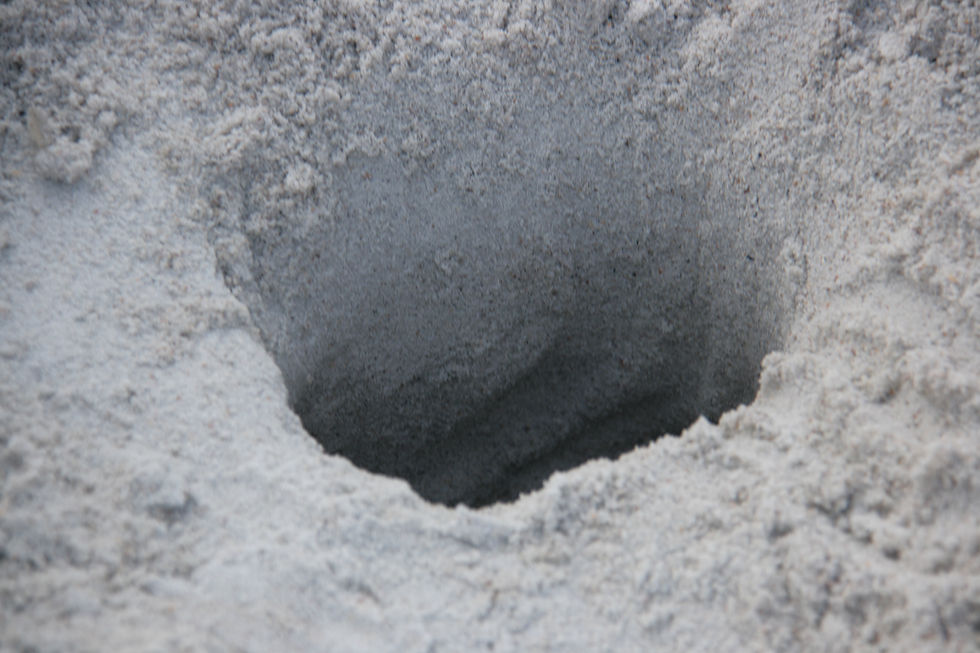
Volunteers walk the beaches every morning during nesting season to locate freshly laid nests and, during hatching time, to monitor which nests have had hatchlings.
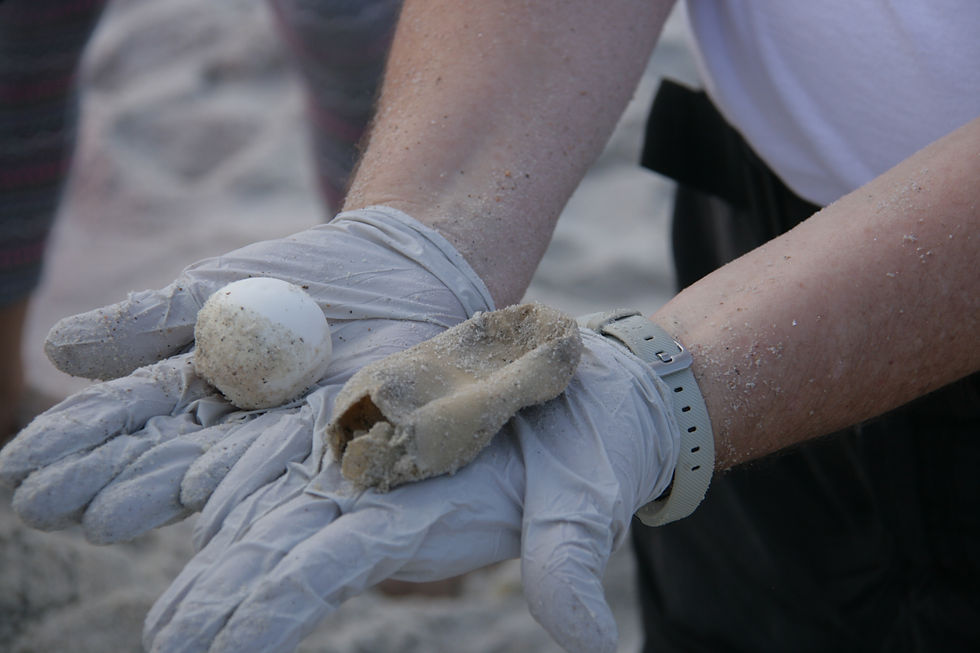

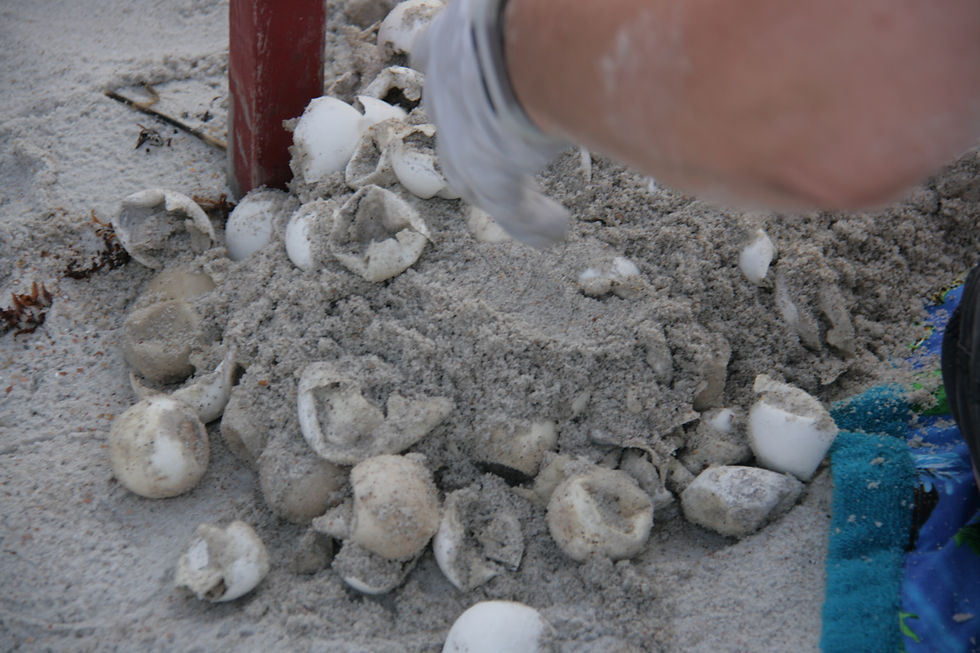
Three days after the emergence of the hatchlings, nests are scheduled for excavation where volunteers excavate it and take an inventory of the contents. They find empty eggshells (shards), unhatched eggs, and hatchlings that might be trapped or dead in the nest. It is an inventory, but often an additional opportunity to save a few turtles that may be trapped beneath the nest residue and unable to escape on their own.

In 2021, there were 184 sea turtle nests on Amelia Island (including Fort Clinch State Park and Amelia Island State Park) and 16,980 live turtle births.
How to help Sea Turtles During Nesting and Hatching Season (May through October)
Keep the beach clean, flat, and dark
Holes in the sand, beach furniture, and trash should be removed at the end of the day (all impediments endanger turtles that come on the beach to lay eggs and hatchlings trying to get to the water).
Turn off porch lights facing the beach and pull curtains closed at night (newly hatched turtles may be confused by light other than moon or sun that will lead them to the ocean).
What to do if you find a baby sea turtle on the beach
Make sure you have spotted a sea turtle and not a gopher tortoise. Gopher tortoises live in the dunes, have feet (not flippers), and occasionally come down to the ocean to wash themselves. The saltwater helps them clean parasites from their shells. It is natural for them to be in the ocean, and they should not be disturbed.

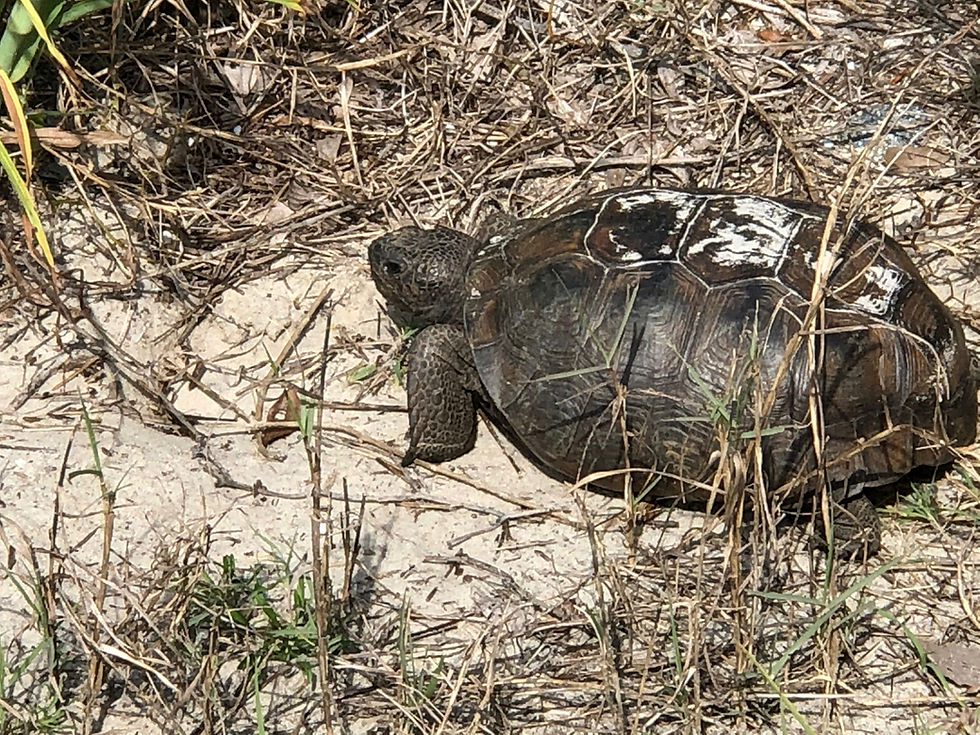
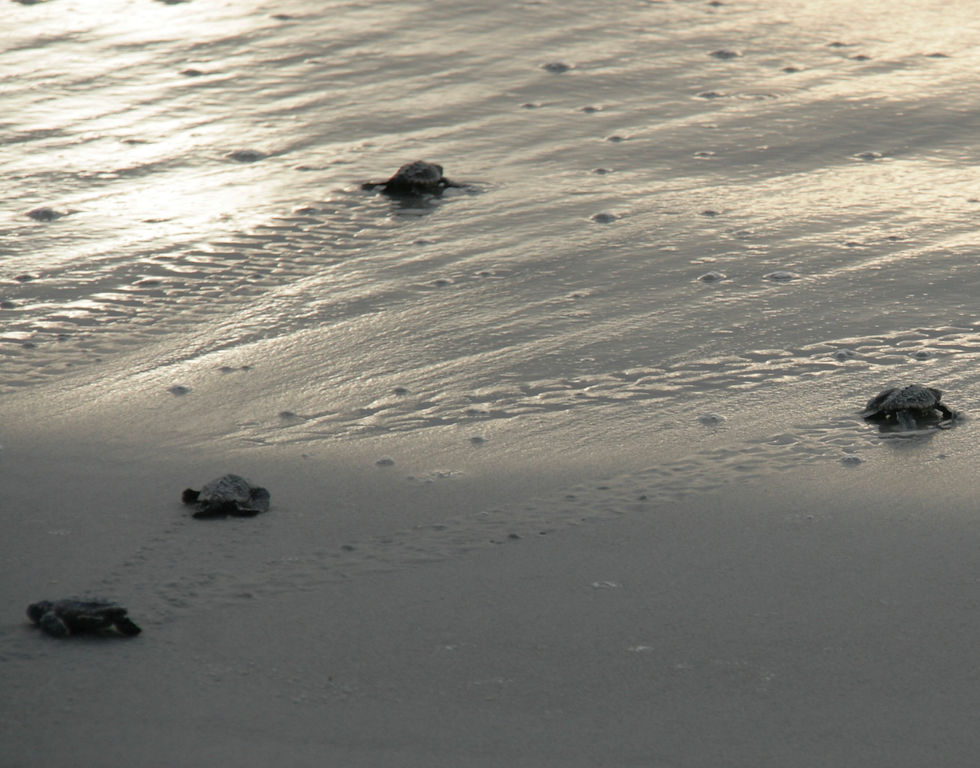
If it is a sea turtle (it has flippers, not feet), and it is during hatching time, June through October, and the turtle is small (3-4” diameter), it is very likely that it has just hatched from the nest and is on its way to the ocean.
Stand next to the turtle and protect it from onlookers and birds. If it is moving toward the water on its own, please don’t interfere and let it move at its own pace; your presence will keep predators away.
On Amelia Island, call Amelia Island Sea Turtle Watch: 904-583-1913
Elsewhere, call the local police department (non-emergency) and ask for help finding the local sea turtle rescue.
Do what the experts tell you to do.
Do not put hatchlings in the water without first talking to the local sea turtle group, local law enforcement, or Florida Fish and Wildlife. Removing the turtle from the beach is a federal and state offense and carries stiff fines (and risks the turtle's life).
THANK YOU for caring about our sea turtles.
Visit Amelia Island Sea Turtle Watch for more information.
With thanks to Ramona Peters and Mary Duffy, who were instrumental in the successful rescue and in providing information for this blog.


Thanks for you time to write about this wonderful experience. My wife and I volunteering for the turtle watch and have had an experience like this a few times. It is priceless! I can see the time and effort you have put into this story and again it reminds me and my wife Loretta of how lucky we are to be part of this.
My friend Kat, the sea turtle whisperer! I love your blog!
Kat with the double save! Well done! My husband saw FOUR hatchlings when he came across an early morning excavation. I’ve now witnessed two excavations but no live hatchlings yet. Your timing was divine. Thanks for sharing this experience with us. Truly magical!
What a magical experience you had! I remember the first time I saw the ocean in South Carolina when I was 16, we came upon a sea turtle struggling to return to the ocean after laying her eggs. It was my magical experience as well
So fascinating, Katherine. You really do live in a most remarkable place.